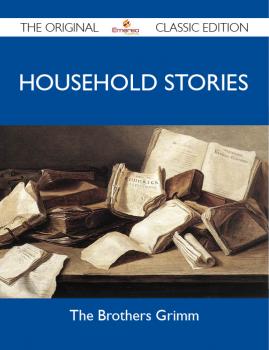Grimm the
Список книг автора Grimm theHousehold Stories - The Original Classic Edition
The Brothers Grimm were the first to make a significant scholarly attempt to collect the original versions of traditional folk tales, as told by ordinary people. They didnt always adhere perfectly to that dictum – some of the stories they collected from print sources and educated, middle-class tale-tellers, not just the common folk – but they were in many ways the first scholarly folklorists. They were also German nationalists, and their collections were intended to help foster a sense of German national identity and German virtues. <p> Because the Grimms did edit their stories somewhat, and because many of these are traditional stories that exist in many versions in many nations, there are often versions that are earlier and more primal than the ones here. <p> Many people think that fairy tales are just for children and that adults can get nothing worthwhile or practical from them. These people forget that fairy tales are akin to myths, legends, parables, many sermons, and Midrash. They are tales with messages. Many are unnatural, magical, otherworldly; but these aspects help capture the listeners imagination and help them remember many details so that even though they may not fathom them immediately, they will recall them later, sometimes just subconsciously, and get the practical lessons. <p> Lets take a familiar story, Rapunzel. Parents surrender their child to an enchantress in exchange for a large supply of a delightful edible plant called rapunzal. While the parents willingly give up their daughter, the enchantress wants her just for herself. She calls her Rapunzel after the food. She places her in a tower with no doors and a window. Rapunzel has very long hair. When the enchantress want to go see her, she calls to Rapunzel to let her hair out the window and she climbs up the hair to her room. A prince happens by and sees this. When the enchantress goes away, he calls to Rapunzel, who thinks he is the enchantress, and climbs up her hair. Soon Rapunzel is pregnant, the enchantress discovers the liaison, she blinds the prince, and cuts Rapunzels hair to stop the prince from ascending to her. Rapunzel finds a way to build a rope so that she can descend, and does so. She cries when she sees that the prince is blind and her tears restore his sight, and she and the prince live happily ever after. <p> What does this story tell its readers? Note that the parents willingness to give up their only child because of the mothers craving for a delicacy is remarkably similar to the biblical story of King Davids lust for Bat Sheba and both are similar to the daily act by people giving up something important because of momentary cravings; such as good health for a hamburger. What is the enchantress? Couldnt she simply be the laws of nature? What does the hair signify? Ever since the beginning of time people thought that some special power exists in hair. The Greek warrior Spartans wore their hair long for this reason, so did the biblical Samson. What is the significance of the prince and climbing up the hair? What is the meaning underlying the use of rope instead of hair? Does it suggest getting rid of superstitions (about hair) and using intelligence? What practical lesson is there in the idea that the tears opened the princes vision? These are just a few of the many questions that can be asked about this simple fairy tale, questions that show that the story has lessons.
